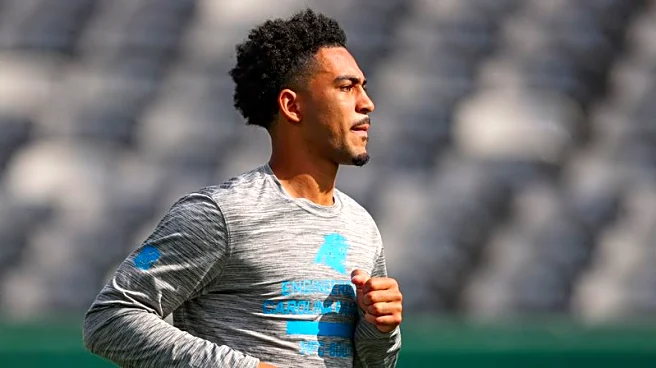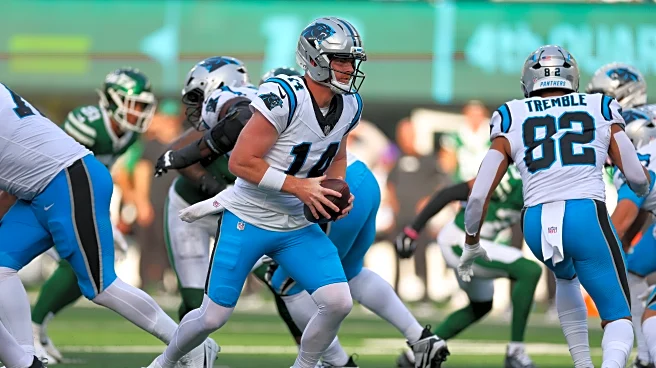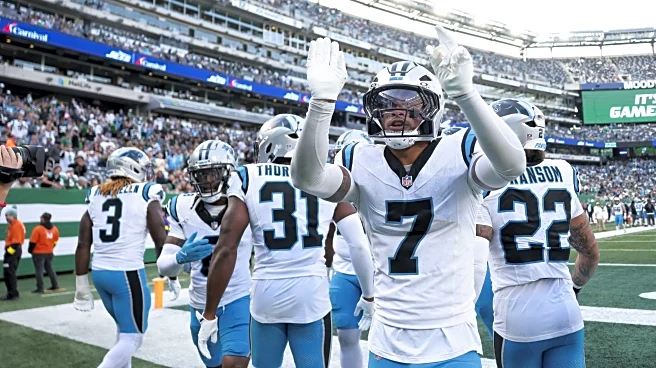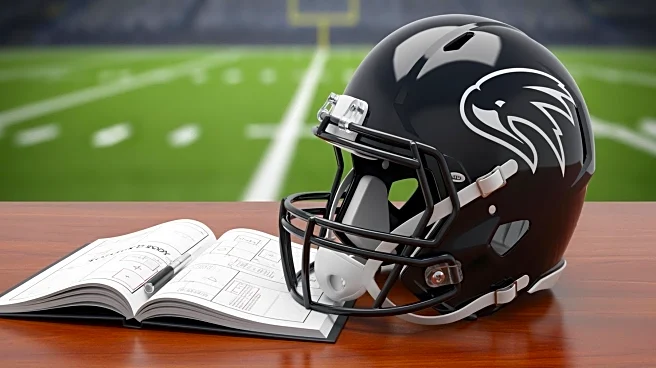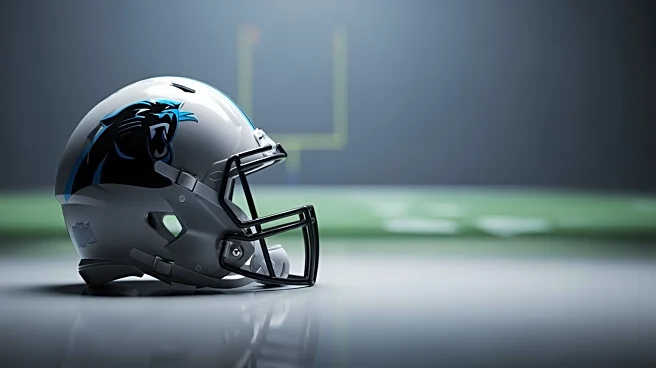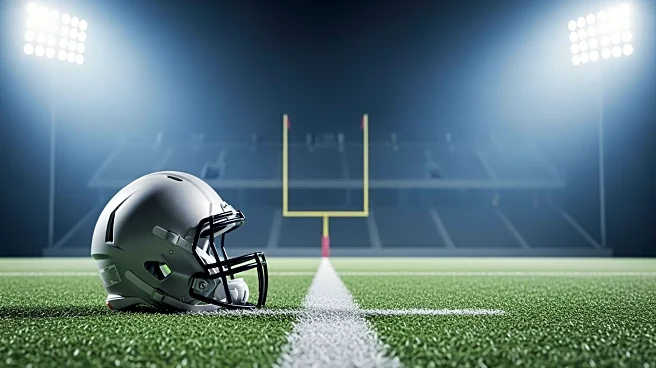What's Happening?
Emily Barnes, a reporter covering the Buffalo Bills' final season at Highmark Stadium, reflects on her first game experience at the venue. The game, which took place on November 19, 2023, saw the Bills defeat the New York Jets 32-6. For Barnes, the event
was more than just a football game; it was a moment of personal healing during a challenging period in her life. The experience was marked by the communal energy of the fans and the symbolic escape the stadium provided. Barnes' reflection is part of a series documenting the last season at Highmark Stadium, capturing the emotional and historical significance of the venue for fans and the community.
Why It's Important?
The farewell to Highmark Stadium is significant as it marks the end of an era for the Buffalo Bills and their fans. The stadium has been a site of shared memories and community bonding for decades. For individuals like Barnes, it represents personal milestones and emotional journeys. The series documenting the stadium's final season highlights the cultural and social impact of sports venues as spaces of collective experience and personal reflection. The transition to a new stadium will not only affect the team's logistics but also the emotional landscape of its fan base, who have long associated the venue with personal and communal identity.
What's Next?
As the Buffalo Bills prepare to transition to a new stadium, fans and the community are likely to engage in a period of nostalgia and reflection. The series documenting the final season at Highmark Stadium will continue to capture these sentiments, providing a platform for fans to share their memories and experiences. The move to a new venue will also prompt discussions about the future of the team's identity and the role of sports in community cohesion. Stakeholders, including team management and local authorities, will need to consider how to preserve the legacy of Highmark Stadium while embracing new opportunities.
Beyond the Headlines
The closure of Highmark Stadium raises broader questions about the role of sports venues in cultural and community identity. As cities and teams move towards modern facilities, there is a risk of losing the historical and emotional connections that older venues provide. The transition offers an opportunity to explore how new stadiums can incorporate elements of tradition and community engagement. Additionally, the personal stories shared by fans and reporters like Barnes highlight the therapeutic and escapist role sports can play in individual lives, offering insights into the psychological and social benefits of communal sports experiences.


